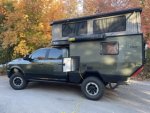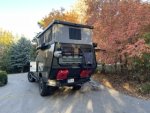BruLew
Member
I reached out to Enduro campers last week because I was interested in their Lobo Camper. I got a response over the weekend that we would talk Tuesday and just received an email stating that they are no longer taking orders on the Lobo and will focus exclusively on the SuperTourer.
From all that I have read both here and elsewhere online, they've spent a couple years in r&d and they've really only launched this past 12 months. Having an excellent product in launching in this market is difficult because the demand is through the roof. I get the impression that they've been inundated with emails (no phone number available) and they had to make a hard decision about where to focus. Sucks for me although it makes my decision easier with one less option but I was really impressed with what they were building.
The good news is if you're interested in a SuperTourer, then let them know and get in line. ✌?
From all that I have read both here and elsewhere online, they've spent a couple years in r&d and they've really only launched this past 12 months. Having an excellent product in launching in this market is difficult because the demand is through the roof. I get the impression that they've been inundated with emails (no phone number available) and they had to make a hard decision about where to focus. Sucks for me although it makes my decision easier with one less option but I was really impressed with what they were building.
The good news is if you're interested in a SuperTourer, then let them know and get in line. ✌?







